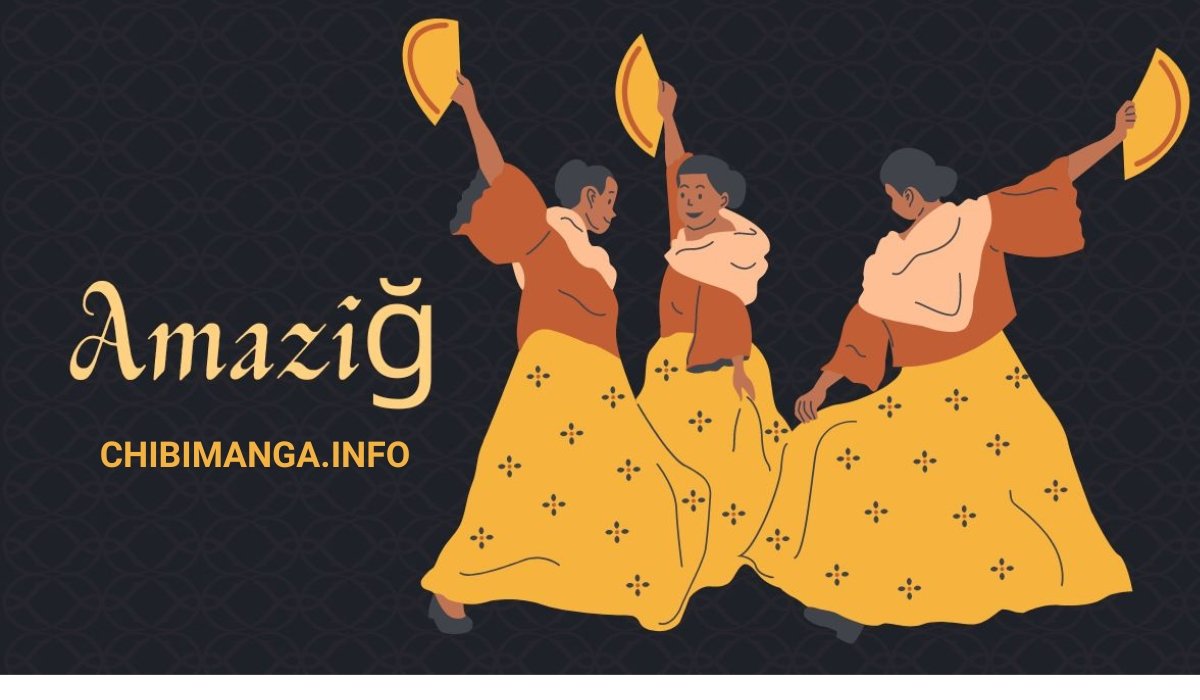The history of the Amaziğ people is a tapestry woven with threads of resilience, endurance, and cultural richness. From their prehistoric roots to their enduring traditions, the Amaziğ have left an indelible mark on the landscapes of North Africa. Let’s embark on a journey through time as we unravel the fascinating history of the Amaziğ people.
Prehistoric Roots Amaziğ
The Amaziğ heritage traces its origins back to the Paleolithic era, a time marked by the emergence of early human civilizations. Evidence of the Amaziğ presence during this period can be found in the form of rock paintings and carvings scattered across the vast expanse of North Africa. These ancient artworks provide glimpses into the lives, beliefs, and artistic expressions of our ancestors, offering invaluable insights into the early stages of Amaziğ culture.
Ancient Civilizations
The Amaziğ people played a pivotal role in the development of ancient civilizations such as Carthage and Numidia. As key players in trade, governance, and art, the Amaziğ left an indelible imprint on the cultural landscape of North Africa. Their contributions to commerce, craftsmanship, and governance helped shape the destiny of the region, laying the foundations for future generations to build upon.
Endurance through External Influences
Despite facing invasions by powerful empires such as the Romans and Arab conquerors, the Amaziğ people have demonstrated remarkable resilience in preserving their cultural identity. Through centuries of adversity and external influences, they have steadfastly held onto their traditions, language, and way of life. Their ability to adapt and resist assimilation speaks volumes about the strength and tenacity of the Amaziğ spirit.
The Language of Identity
At the heart of Amaziğ identity lies the Tamaziğt linguistic tradition, which encompasses a diverse array of Berber languages spoken across North Africa. From the rugged mountains of the Atlas to the sun-drenched sands of the Sahara, Tamaziğt serves as a linguistic thread that binds Amaziğ communities together. Despite the challenges posed by external pressures and historical marginalization, efforts to recognize and revitalize Tamaziğt are underway, reflecting the Amaziğ people’s quest for cultural autonomy and linguistic preservation.
Cultural Expressions
The cultural expressions of the Amaziğ people are as diverse and vibrant as the landscapes they inhabit. Music, dance, and textiles serve as potent forms of artistic expression, reflecting the spiritual, communal, and aesthetic dimensions of Amaziğ life.
Music
Music holds a special place in Amaziğ culture, serving as a medium for storytelling, celebration, and spiritual expression. From the haunting melodies of the Imzad to the rhythmic beats of the Bendir, Amaziğ music resonates with a deep sense of tradition and heritage.
Dance
Dance is another integral aspect of Amaziğ cultural expression, serving as a means of promoting social cohesion and celebrating communal identity. Whether performed at weddings, festivals, or other social gatherings, Amaziğ dance embodies the joy, vitality, and resilience of the Amaziğ spirit.
Textiles
Textiles play a dual role in Amaziğ culture, combining aesthetic beauty with symbolic meaning. From intricately woven carpets to elaborately embroidered garments, Amaziğ textiles serve as tangible expressions of identity, heritage, and craftsmanship.
Celebrating Identity
Throughout the year, the Amaziğ people come together to celebrate their identity through a variety of cultural festivals and rituals. These events serve as occasions for community bonding, spiritual renewal, and the reaffirmation of cultural values.
Yennayer
Yennayer, the Amaziğ New Year, marks the beginning of the agricultural calendar and is celebrated with feasting, music, and traditional rituals. It serves as a time for reflection, renewal, and the reaffirmation of cultural heritage.
Imilchil Marriage Festival
The Imilchil Marriage Festival is a traditional event that showcases Amaziğ matrimonial customs and serves as a symbol of community unity and cultural pride. It brings together families from across the region to celebrate love, commitment, and the bonds of kinship.
Challenges and Revival
Despite the rich tapestry of Amaziğ culture, the Amaziğ people have faced numerous challenges in preserving their heritage. Historical marginalization, external pressures, and social change have posed significant threats to the continuity and vitality of Amaziğ traditions. However, amidst these challenges, there is a growing resurgence of interest in Amaziğ culture and a renewed commitment to its preservation.
Historical Marginalization
Throughout history, the Amaziğ people have often been marginalized and subjected to discrimination, both within their own lands and by external powers. Policies of assimilation, cultural suppression, and linguistic marginalization have threatened the survival of Amaziğ traditions and eroded the fabric of Amaziğ identity.
Resurgence of Interest
In recent years, there has been a notable resurgence of interest in Amaziğ culture, fueled by a growing recognition of its richness, diversity, and significance. Scholars, activists, and cultural enthusiasts are increasingly turning their attention to the preservation and revitalization of Amaziğ traditions, languages, and customs.
Efforts for Cultural Preservation
Amidst the challenges and complexities of the modern world, there are concerted efforts underway to safeguard the Amaziğ heritage for future generations. From grassroots initiatives to government-sponsored programs, there is a growing movement to promote Amaziğ language, culture, and identity through education, advocacy, and cultural exchange.
In conclusion, the history of the Amaziğ people is a testament to the resilience, creativity, and cultural vitality of indigenous communities across the globe. From their prehistoric roots to their enduring traditions, the Amaziğ have forged a rich tapestry of heritage that continues to inspire and enrich the world. As we unravel the story of the Amaziğ people, we gain a deeper appreciation for the diversity, complexity, and beauty of human experience.
FAQs:
- Who are the Amaziğ people?
- The Amaziğ are indigenous North African ethnic groups with a rich history dating back to prehistoric times.
- What is Tamaziğt?
- Tamaziğt refers to a linguistic tradition encompassing various Berber languages spoken across North Africa.
- What are some Amaziğ cultural expressions?
- Amaziğ cultural expressions include music, dance, and textiles, reflecting their heritage and identity.
- What are the challenges facing Amaziğ cultural preservation?
- Challenges include historical marginalization and external pressures, but there’s a growing resurgence of interest.
- How can I learn more about Amaziğ culture?
- Explore festivals like Yennayer and the Imilchil Marriage Festival, or engage with initiatives promoting Amaziğ heritage.










